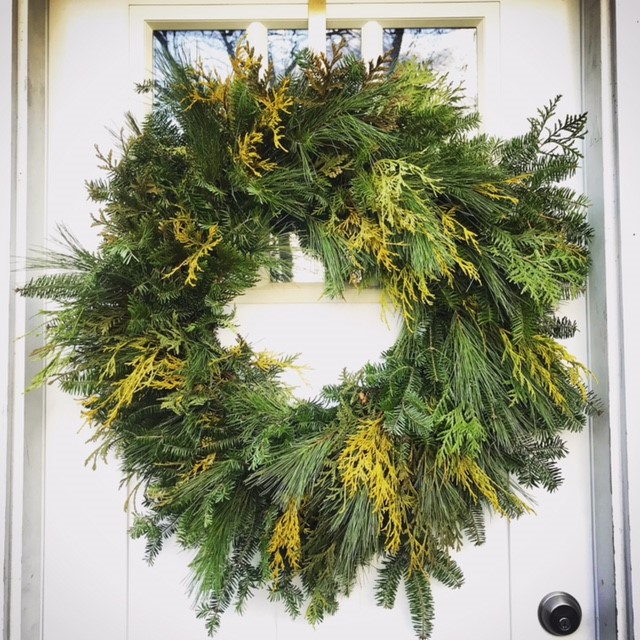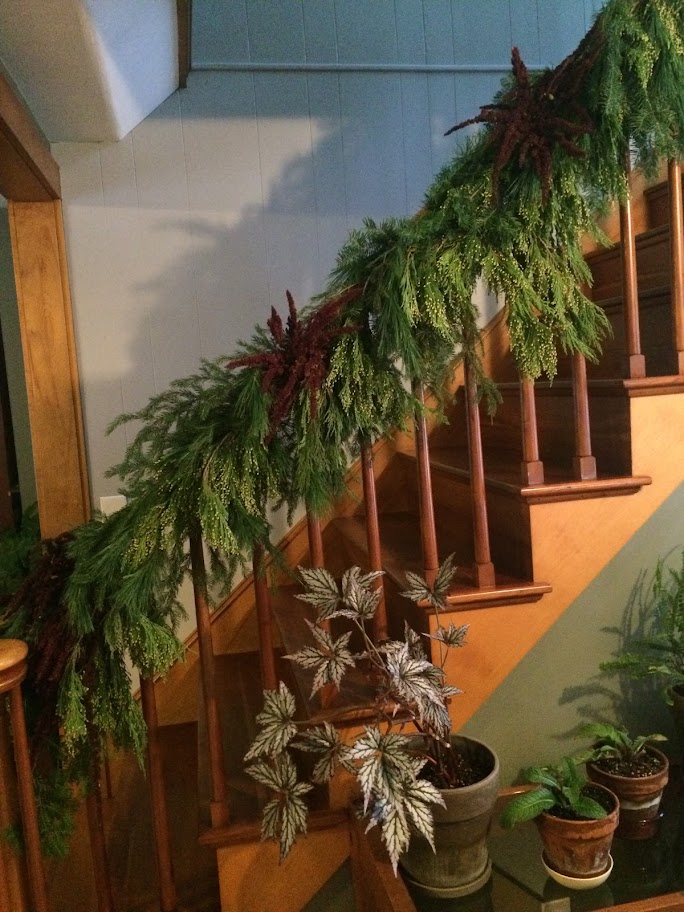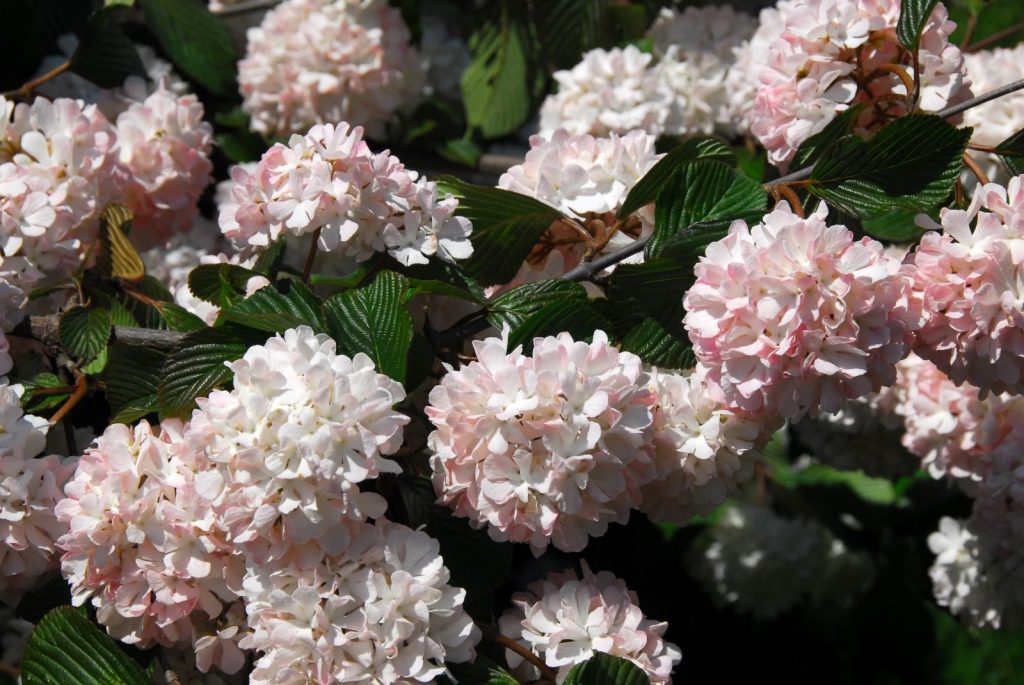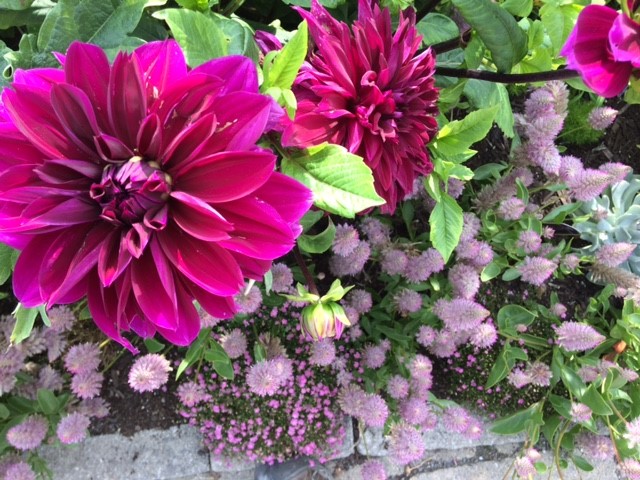Winter décor and evergreens just go hand in hand, don’t they? Because evergreens are often the only sign of life in an otherwise cold, dormant world, they symbolize life, health, and home. In fact, the oil and resin of fir trees have long been used for their antiseptic properties, and, their festive connotations aside, bringing boughs into the home can help freshen and disinfect the air.
Making Winter Arrangements with Horticulturists Jen Dunlap & Diane Walden
But beyond all of that, crafting with greens is just good fun, whether on your own or gathered with friends and family for a massive wreath-making extravaganza. To delve deeply into this topic, we mined CMBG horticulturists for some top tips. Meet Jen Dunlap, horticulturist and herbalist, and Diane Walden, horticulturist and floral designer, holders of vast knowledge, long experience, and savvy artistic eyes.
(And remember—if you want a more in-depth study with these true evergreen-crafting masters, you can join Jen’s online wreath-making class, December 4, and/or Diane’s festive winter arrangement class, December 11. Pop over here for all the details.)
“Whatever you can forage in nature, that’s your first choice for projects like these,” Jen says. “And source the things you have in abundance.” Evergreens, pines, fir, balsam, rhododendron, rosehips, and winterberry are all stellar eye-catching and fragrant choices. “Cedars are also a good option for adding different colors and textures, especially some of the beautiful chartreuse or blue/silver cultivars,” she adds.
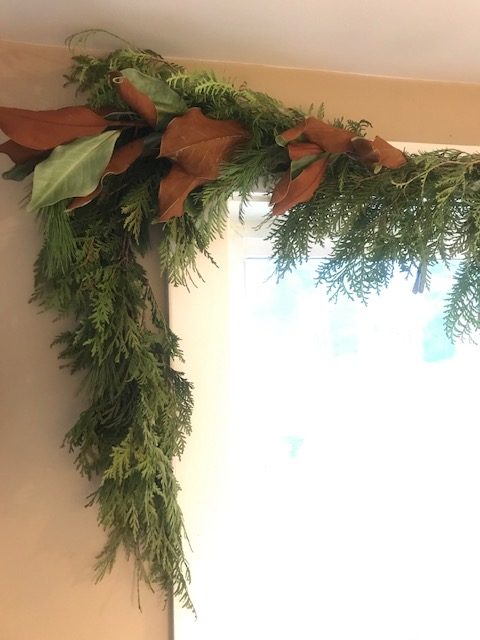
Because they drop needles so quickly, Jen advises staying away from spruce. “Hemlock, too,” she advises. “It can carry a pest called woolly adelgid, which is a detriment to our native hemlock.” The pest looks like a wooly aphid and leaves a kind of white fuzziness on underside of the leaf. “It’s killing off native stands of hemlock,” Jen says, “and foraging the boughs may spread it.”
Once you’ve gathered evergreens, you don’t need to stop there. “Dried flowers and seedheads are so versatile,” Jen continues. Her personal favorites, varieties that hold color and offer versatility, are celosia spicata, or foxtail flower, in hot pink, dark pink, and white. “Globe amaranth, gomphrena, comes in a bunch of colors: pinks, whites, purple, orange, and they all dry well. Really, any seedheads that you find attractive are great to use—just pay attention to what plant you’re using. If it’s invasive,” she warns, “consider not using it because you don’t want to contribute to its spread. Bittersweet,” she adds, “is a great example. It’s stunning, but every time those seeds drop off, it gives the plant a chance to spread.”
However, if you really love the look of bittersweet, opt for artificial vines or lookalikes like rosehips. Likewise, anything you can’t find or forage, you can always source from a local florist. Items like giant pinecones, which grow more readily in the Pacific Northwest, can be ordered—just do your research and make sure the materials are ethically sourced.
And don’t forget your annuals! “Any kind of silver-leafed plants like artemesia, helichrysum, or dichondra silver bells that dry well and hold their color and texture can look like snow.”
Speaking of snow, one of Jen’s projects used plants to that exact effect. “I used a big trough and lined it with plastic. Then I arranged a handful of bricks to secure an arrangement of saplings and winterberry. I filled the whole thing with water, which froze and secured the entire arrangement. Finally, I used helichrysum as a big mat, forming this big silver mound, added twinkle lights, and the whole thing looked like snow.”
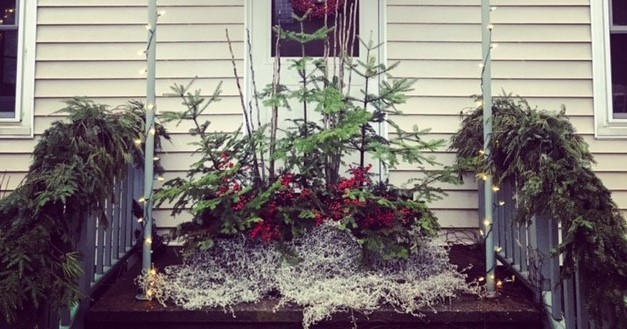
You certainly don’t need to go to these lengths for a similar effect (but you can!). You can achieve something similar with any arrangement, tucking boughs into wreaths for color and texture.
If this is a project you’d like to take on, read on for a few easy tips from our master:
- To make arrangements last, keep them out of sunlight and away from direct heat sources. Mist with water (if indoors). Outdoors, they more or less take care of themselves.
- Wait until it gets cold to harvest plant material, otherwise, chances are it won’t last. “If you wait until after Thanksgiving,” Jen says, “the needles will hold a lot longer.”
- Add your own flair to your design. Jen isn’t into bows (“Because I can’t tie them,” she admits), but whatever you find aesthetically pleasing, add at will.
- Jen also avoids hot glue in favor of wire, “because then I can reuse all the pieces and compost the organic materials.”
- She also reuses bases. The Maine company, Kelco Industries, is a wholesaler of wire wreath rings and wreath-making supplies. “Save money by going in with friends and neighbors, share a box of 100 wreath rings, and host a wreath-making party.”
Diane’s tips:
Horticulturist Diane Walden holds over 30 years’ experience in floral design. A pioneer of the “slow flower” movement, a growing movement that takes into consideration not only where flowers are sourced and grown, but tries to change the popular definition of what makes a floral arrangement aesthetic. If you’re familiar with the concept of farm-to-table, then you’ll understand the concept. Slow flowers are field-to-arrangement–and it works for winter arrangements, too.
Diane advises gathering what you can from your own backyard as well as from wild, public spaces. Living as we do in the Pine Tree State, this is a relatively easy task and ensures that the wreaths we make are sustainable and very local. And don’t worry about perfection. “I love that you’re looking for the bent stem, looking for interesting form, unusual texture. It’s the same thing that makes a good still life painting interesting—you’ll see the bud, the open flower, then maybe a flower falling into a bit of decay. I’m much more enamored of looking at an arrangement that shows a range of the life cycle. There’s something about appreciating what your material really looks like,” she continues. “Supermarket flowers all look alike, for example. Really, it’s no different than putting an insipid tomato on a beautiful salad, just because you think a tomato ought to go there—it doesn’t add anything to the salad, so why put it in? Why use a fake tomato when you have other choices?”
If this sounds like a fun project, start now, she says—the earlier the better. Look around your property before the snow comes and pick up any windfalls—pine cones, branches, rosehips, dried flower heads, seed pods, lichen, moss and berries all make wonderful additions to your wreath. If you gather them now and hang them to dry, they’ll be ready for holiday crafting.
“You can definitely start scoping out potential cuts—for example, hydrangea is perfect to cut now—but it’s best to cut evergreens only after we’ve had three nights of below-freezing temperatures,” advises Diane.
And definitely get creative–try filling a decorative basket with evergreen boughs and some of your add-ins. Prop the basket on a table or hang it on your door or above the mantel. For a smaller-scale creation, try bouquets of greenery—glass or ceramic wall vases make perfect vehicles for your leftover boughs. You can also think outside the box(wood)—in lieu of a bow, greenery also makes great gift toppers. “Learn to go with the flow.” The secret, Diane says, “is in the editing. Let the concept grow, and put everything into it first. Only then distill it down into a nice form. That’s the magic of editing—it’s what makes the difference between something good versus something great, something run-of-the-mill versus something stunning.”
And after the holidays? “Whip on some suet blocks and hang your wreath outside for the birds. When the greens become unsightly, unwind the floral wire to disassemble your wreath,” Walden advises. Greens can be composted or tossed into the woods to decompose naturally.
